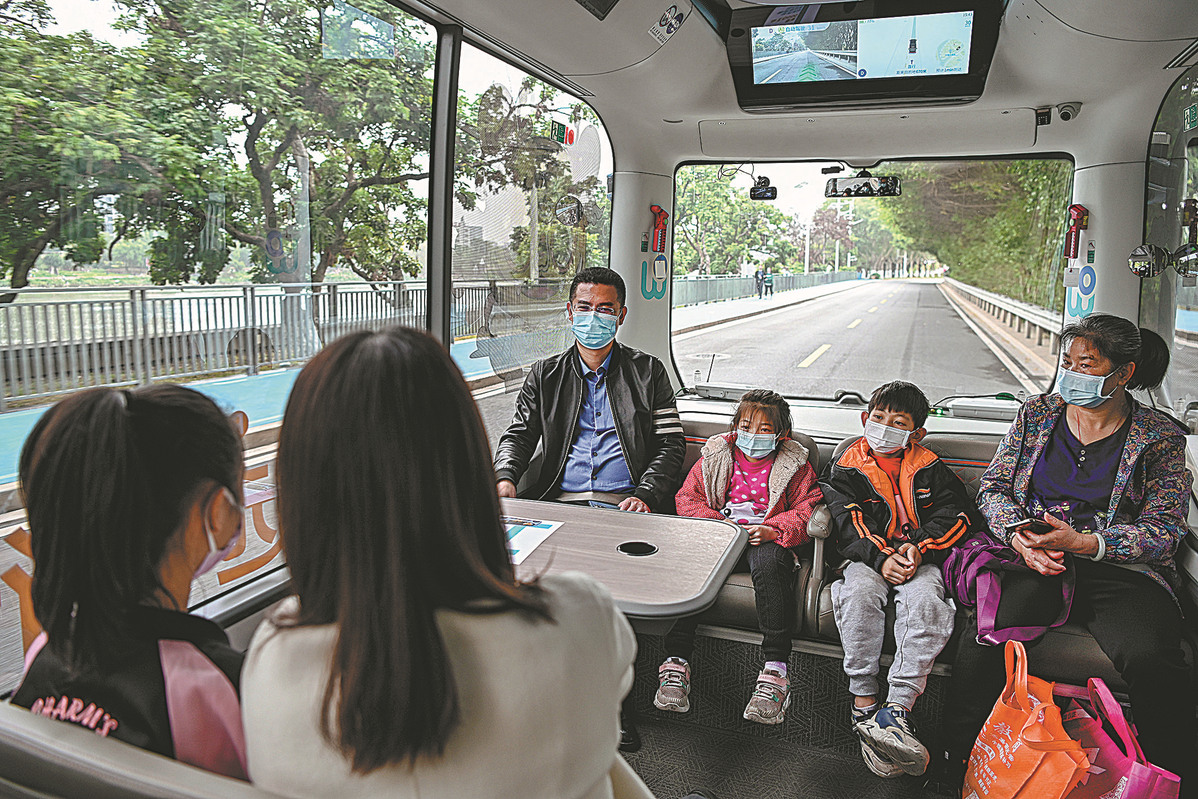Driverless vehicles park themselves in rapidly expanding market

Encouraging prospects attract heavy investment to sector
Sun Jiabei only started to drive in earnest in December, more than three years after she received her license.
"I used to hail a taxi if my father could not drive me to work and home," said the 30-year-old, who works as an office clerk in Zhengzhou, capital of Henan province.
"Driving was easy, but parking was so difficult for me, and like many other new drivers, I found it a different experience to what we were taught at the training school. I became anxious when there were other vehicles behind me," Sun said.
She added that this was why she quickly decided on an electric sport utility vehicle, or SUV, from Chinese carmaker WM Motor when her family was considering trading its 10-year-old Volkswagen Sagitar late last year.
"The salesperson told me the SUV could park itself. That was a big relief and was far more important to me than other things at the time," Sun said.
Sun's SUV can be easily parked, but only in clearly marked parking lots so that its cameras and radar can detect any obstacles before the vehicle steers, reverses and comes to a halt.
"Without these guidance lines, it doesn't know what to do and I have to do it myself, but fortunately there are now more delineated parking lots. I have also become better at parking," Sun said.
The WM Motor model is one of dozens of vehicles with similar functions available in the Chinese market from domestic and international carmakers.
Some of these vehicles allow drivers to get out before driving themselves to parking lots, before returning to collect owners when summoned with the touch of a phone.
According to Chinese carmaker GAC Aion, such tasks can be performed when a driver is within 150 meters of a vehicle, which has to be driven at least once in the parking lot so that it can remember the way and the pickup point.
WM Motor and GAC Aion use Chinese internet giant Baidu's smart driving solutions, while other carmakers, including Nio and Xpeng, have developed their own.
Such functions are classified at Level 2 in the Society of Automotive Engineers International's six-level system of driving automation, with Level 0 designating no automation and Level 6 fully automated.
Level 2 functions, including automatic parking and cruise control, are the highest level of automation that carmakers worldwide are currently allowed to offer. Known as the advanced driver-assistance system, or ADAS, these functions are fast becoming standard in new vehicle launches in China, especially in electric models.
Qin Lihong, president of Nio, a startup that is listed in New York, said that the survival of carmakers in an increasingly competitive market depends on their ability to produce smart vehicles.
Nio's ET7 sedan, which started deliveries late last month, boasts 33 sensors, including cameras and radar, and also features four Orin chips designed by United States company Nvidia for vehicles with a high level of automation.
The car can navigate itself on expressways and downtown roads and also self-park, according to Nio.

